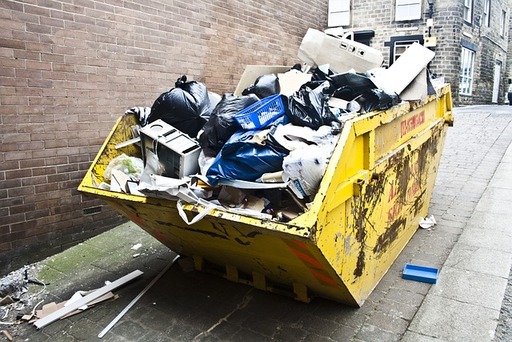
A shared commitment to maintain and improve the places we call home is at the core of every flourishing community, and volunteering for community cleanup projects is a testament to the strength of group effort, encouraging people to participate in the revitalization of their local environments actively. This article takes readers on a journey that goes beyond simply picking up litter; rather, it explores the profound effects that volunteering for community cleanup projects has on the very fabric of community life, from fostering a sense of collective pride to strengthening social bonds and encouraging environmental stewardship.
Volunteering for Community Cleanup Projects is an homage to the transformative potential inherent in the small but meaningful act of giving back against the backdrop of environmental challenges. As we explore the intricacies of community cleanup initiatives, we learn how they become not only a vehicle for empowerment, resilience, and the creation of a shared narrative of collective care and responsibility but also a means of creating cleaner, more aesthetically pleasing surroundings. Joining the ranks of individuals who understand the innate power in their hands—the ability to mold, revitalize, and strengthen the communities that provide the backdrop for their everyday lives—is what this essay asks readers to do.
Here is our related post on How to Clean and Disinfect High-Touch Surfaces in Public Spaces which you will not want to miss.
The Power of Community Cleanup
1. Building a Stronger Community
Participating in cleanup projects brings people together with a shared goal: to enhance the beauty and functionality of their neighborhood. The collective effort fosters a sense of community, creating bonds that go beyond the scope of the cleanup itself.
2. Fostering Civic Pride
A clean community instills a sense of pride among its residents. By actively participating in cleanup initiatives, individuals contribute to a positive environment that enhances their connection to the community and instills a shared sense of responsibility.
3. Improving Quality of Life
A well-maintained community directly impacts the quality of life for its residents. Clean public spaces create inviting environments for outdoor activities, social interactions, and a general sense of well-being.
4. Environmental Stewardship
Community cleanups contribute to environmental stewardship by reducing litter, preventing pollution, and preserving natural habitats. Volunteers play a crucial role in safeguarding the environment for future generations.
5. Beautifying Public Spaces
Aesthetically pleasing public spaces contribute to the overall ambiance of a community. Volunteering for cleanup projects allows individuals to actively participate in creating beautiful, welcoming environments for everyone to enjoy.
Here is our post on Commercial Facility Exterior Cleaning: Curb Appeal and Maintenance
How to Gett Involved in Community Cleanup
Local Cleanup Events
Stay informed about local cleanup events organized by community groups, environmental organizations, or local government agencies. Joining these events provides an easy entry point for those looking to make a positive impact.
Forming Cleanup Committees
Initiate or join a cleanup committee within your neighborhood. These committees focus on organizing regular cleanup efforts, addressing specific issues, and fostering a sense of ownership among residents.
Partnering with Local Organizations
Collaborate with local environmental organizations, schools, or businesses that may already have established cleanup initiatives. Partnering with these entities amplifies the impact of cleanup efforts and creates a network of support.
Utilizing Social Media
Harness the power of social media to connect with like-minded individuals and stay updated on cleanup opportunities. Platforms like Facebook, Twitter, or community-focused apps can be valuable resources for organizing and promoting cleanup events.
Encouraging Workplace Participation
Encourage workplace participation in community cleanup projects. Many companies have corporate social responsibility programs that support employee involvement in local initiatives, providing a structured way to give back.
See also our post on The Ultimate Guide on How to Clean and Care for Your Outdoor Planters and Pots
How to Organize a Successful Cleanup Events
Planning and Coordination
Successful cleanup events require meticulous planning and coordination. Identify specific areas in need of cleanup, set clear goals, and establish a timeline for the event. Coordination ensures that resources are utilized efficiently.
Securing Necessary Permits
Check with local authorities to secure any necessary permits for your cleanup event. This step ensures that your efforts align with local regulations and that you have the support needed for a smooth operation.
Providing Safety Guidelines
Prioritize safety by providing volunteers with clear guidelines. Emphasize the importance of using appropriate safety gear, adhering to traffic regulations, and handling waste responsibly to create a secure environment for all participants.
Waste Disposal Strategy
Develop a waste disposal strategy to handle the collected litter effectively. Arrange for the proper disposal or recycling of materials, and consider involving local waste management services to support your cleanup efforts.
Recognition and Appreciation
Acknowledge and appreciate the efforts of volunteers. Recognition can take the form of certificates, community awards, or a simple thank-you gesture. This appreciation fosters a positive atmosphere and encourages ongoing community involvement.
Educational and Outreach Initiatives
Environmental Workshops
Complement cleanup events with educational workshops on environmental issues. These workshops can cover topics such as waste reduction, recycling practices, and the impact of litter on ecosystems.
School Partnerships
Forge partnerships with local schools to involve students in cleanup projects. Educating the younger generation about the importance of environmental stewardship instills a sense of responsibility from an early age.
Community Outreach Programs
Implement community outreach programs to raise awareness about the benefits of a clean environment. Engage with residents through informational sessions, distributing pamphlets, or leveraging digital platforms to share valuable insights.
Public Art Installations
Incorporate public art installations into cleanup initiatives. Transforming discarded items into art not only beautifies public spaces but also serves as a powerful visual reminder of the impact of community collaboration.
Sustainable Practices Integration
Integrate sustainable practices into cleanup events. Emphasize the use of reusable bags, water bottles, and other eco-friendly alternatives. By aligning cleanup efforts with sustainable practices, the community reinforces a commitment to long-term environmental well-being.
Click here to have a glance at our post on How to Clean and Sanitize Public Transit Vehicles
Sustaining Community Engagement
Regular Cleanup Schedules
Establish regular cleanup schedules to maintain ongoing community engagement. Consistency builds momentum and encourages residents to make cleanup efforts a routine part of their commitment to the community.
Collaboration with Local Businesses
Forge partnerships with local businesses to sustain community cleanup efforts. Businesses can provide support through sponsorships, volunteer involvement, or logistical assistance, creating a mutually beneficial relationship.
Green Space Development
Invest in the development and maintenance of green spaces. Community cleanups can extend to planting trees, creating gardens, or revitalizing public parks, contributing to a healthier and more vibrant community environment.
Networking and Collaboration
Foster networking and collaboration among community groups, organizations, and residents. Building a network of individuals dedicated to community improvement ensures a collective and sustained effort toward a cleaner, healthier neighborhood.
Celebrating Milestones
Celebrate milestones and achievements in community cleanup efforts. Whether it’s reaching a specific number of cleanup events or achieving a significant reduction in litter, acknowledging successes motivates volunteers and reinforces the positive impact of their contributions.
See also Commercial Bakery Equipment Cleaning: Ensuring Food Safety which you will not want to miss.
Conclusion
When people volunteer for community cleanup projects, they are engaging in a transformative process that goes beyond simply picking up litter; it is about connecting with others, promoting civic pride, and developing a vibrant and sustainable community. When people actively contribute to the upkeep and aesthetics of their neighbourhood, it has a positive knock-on effect that benefits both the environment and the general well-being of the community. Communities that undertake this collective journey not only become cleaner, but also stronger, more connected, and more prepared to face future challenges. Come embrace the power of “Cleaning with a Purpose” and see the good change that results from people coming together for a shared goal.







